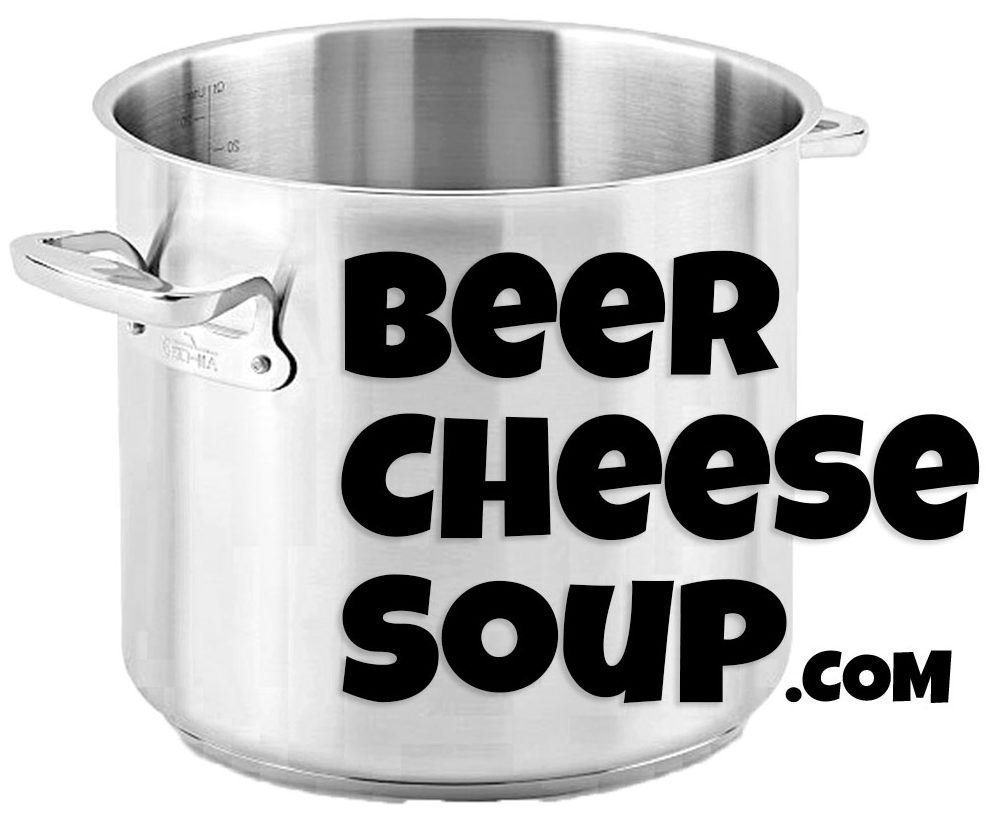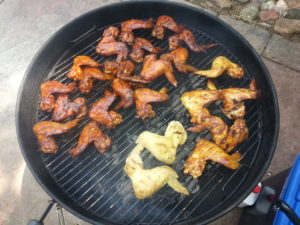
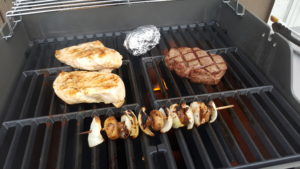

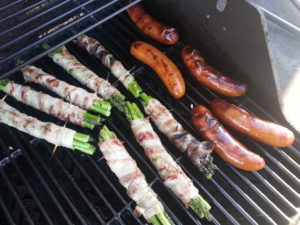



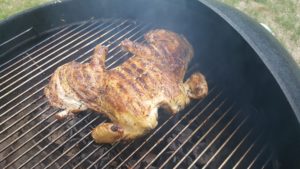

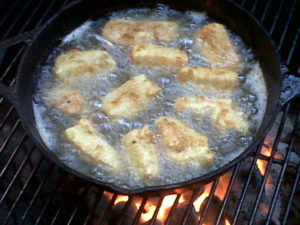
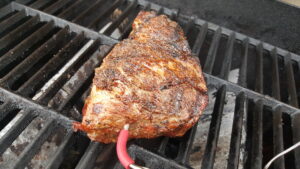
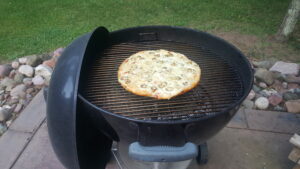
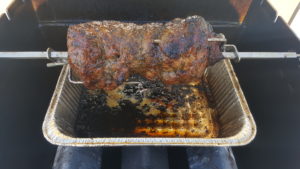
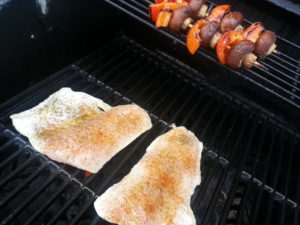

Charcoal or Gas? Chimney Starter or Lighter Fluid?
Opinions vary. My take is that it depends on the application. I like to use gas when: a.) I am in a hurry; b.) I need a protected, controlled flame; c.) rotisserie; or d.) convenience. I like to use charcoal when: a.) I have time; b.) I am entertaining; c.) using smoke; or d.) slow cooking larger mass meats. Chimney starter vs. lighter fluid? Well, my Dad used to start the charcoal burner with a good dose of gasoline, so I have a little history with fluid starters. I typically use a chimney when weather conditions are reasonably good. If wildfire conditions are bad (but it is still OK to grill), I don’t use the chimney because embers and sparks will blow. When the temps are 10 below zero or colder with calm conditions, I might use fluid to get the fire started quicker. If you use lighter fluid, remember…moderation. Some people disagree, but if you use conservatively, and allow the fluid to burn off completely, the smell and taste is negligible. The bottom line…it depends. A good grill master evaluates the conditions and uses the best tools for that application. I try not to be judgmental. A couple more things…
DO: Rest your meats after cooking. Allow the juices to re-establish before carving that flank steak or taking a bite out of the burger. How long? Depends on the density of the grilled meat. I think 8-10 minutes on an average sized steak will do it.
DON’T: Let your steaks warm to room temperature before grilling. I never bought into that food blog recommendation. The best steakhouses in the world keep their steaks in the cooler until it’s time for the grill. No sense risking bacteria growth leaving refrigerated product out in the danger zone (40-140 degrees). However, I do unwrap them in the refrigerator a few hours prior to grilling to dry (evaporate some of the outside moisture). On a hot, well oiled grill you will get better grill marks.
Choosing the Right Meats

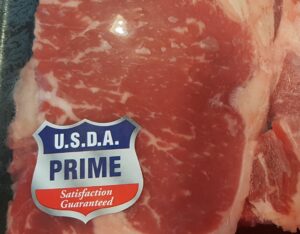
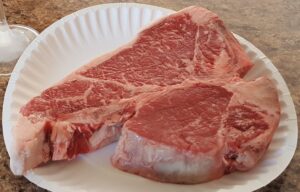
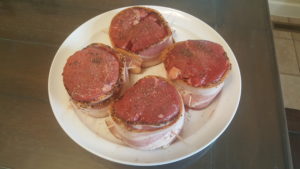

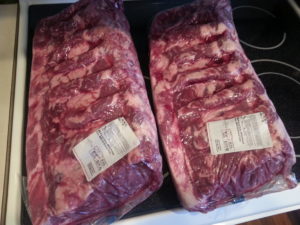
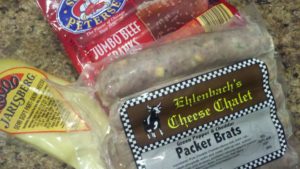
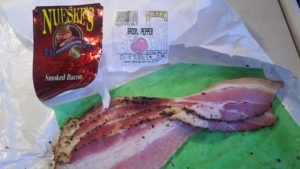
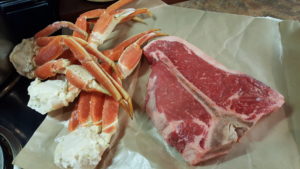
You can’t beat good material. The adage: you get what you pay for is absolutely true when working the grill. Find a good meat market and test their product. Don’t be afraid of the grocery store butcher! I have had great luck using “store-bought” meats, as long as I carefully inspect their product. My kids tease me because I occasionally return items to the market if the quality is not to the standard that is advertised. I have done that with meats, I have even done that with a can of olives. When buying beef, look for good marbling (fat content), I use choice grading, well trimmed and good color. I like to cut my own steaks and chops whenever possible. I prefer thick cuts. Wrap your tenderloins with bacon because that very lean cut tends to dry out during grilling. Slow cooking large muscle meats can also produce dry results. Try to buy meats with a larger fat cap (placed up) for self basting during cooking. As the fat melts, the meat stays moist. Corned beef…I like flat cuts vs. point cuts…they just slice better. Seafood: dry scallops, raw 10-12 sized shrimp (means that there are 10-12 shrimp to a pound), cold water lobster, Canadian walleye (if you don’t have a generous friend), snow crab and grouper. I recently started dabbling in the art of cooking lamb. I like to buy the Australian french cut racks found in Costco or Sam’s Club. They usually come two in a pack and are relatively inexpensive…and a good product.
Rotisserie Leg of Lamb
1 4-5 lbs boneless leg of lamb trimmed of excess fat
2 tsp kosher salt
1 tsp cracked black pepper
Marinade
½ cup olive oil
¼ cup lemon juice
1 tbsp chopped fresh rosemary
2 tbsp minced garlic
2 tsp lemon zest
Baste
¼ cup lemon juice
¼ cup melted butter
1 tbsp chopped fresh rosemary
Mix marinade ingredients. Place lamb in a large resealable plastic bag. Pour in the marinade, seal the bag and rotate to thoroughly coat the lamb. Refrigerate for 2 hours. Remove lamb from marinade and roll into a tight cylinder, tie securely with butcher’s twine and thoroughly season with salt and pepper. Run rotisserie spit through middle of lamb and secure. Place on the grill, cover, and rotate over medium heat. Baste lamb every 15 minutes, watching for flare ups. Cook lamb until desired temperature (130 degrees for med-rare using an instant read thermometer). Remove from grill and detach the rotisserie spit. Allow to rest 15 minutes. Carve and enjoy!
Pro-tips:
• Great when served with grilled pita bread
• Tie together a whisk of rosemary and thyme sprigs to use as a basting brush
• Charcoal or gas, just be sure to have a drip pan
• Pairs great with a deep, red wine like Cabernet Sauvignon
Perfectly Grilled Beef Tri-Tip
2-3 lbs. beef tri-tip roast
1 tbsp olive oil
Basic BBQ Seasoning Dry Rub (equal parts of each, or measure to your liking)
-smoked paprika
-coarse salt
-ground black pepper
-onion powder
-garlic powder
-dark chili powder
-light brown sugar
Herb Seasoning Dry Rub (equal parts of each, or measure to your liking)
-Italian seasoning blend
-garlic powder
-thyme
-sweet basil
-ground black pepper
-oregano
-parsley
Coat tri-tip with oil. Rub with the seasoning rub of your choice. Place seasoned tri-tip uncovered in the refrigerator for an hour. Prepare clean grill for one side direct heating (high to med high) and the other side indirect heating (low or off). Place the tri-tip over the direct heat and quickly sear all sides beginning with the fat cap side first (expect flare ups). You are looking for a solid, even char. Next, move the tri-tip to the indirect side of the grill with the fat cap up. Close or cover
grill and maintain a grill temp at around 350 degrees. Cook until you reach your desired internal roast temperature (Rare-125, Medium Rare-135, Medium-145, Medium Well-150, Well-160). Always use a remote probe thermometer for best results as the internal temperature can rise quickly. Pro-tip: If you aren’t sure, it’s always better to undercook than overcook. You can always put the tri-tip back on the grill if needed. Remove from the grill and lightly tent the tri-tip with foil and let rest for 10-20 minutes, depending on the size of your tri-tip. Slice across the grain into ¾ inch wide portions and serve immediately.
